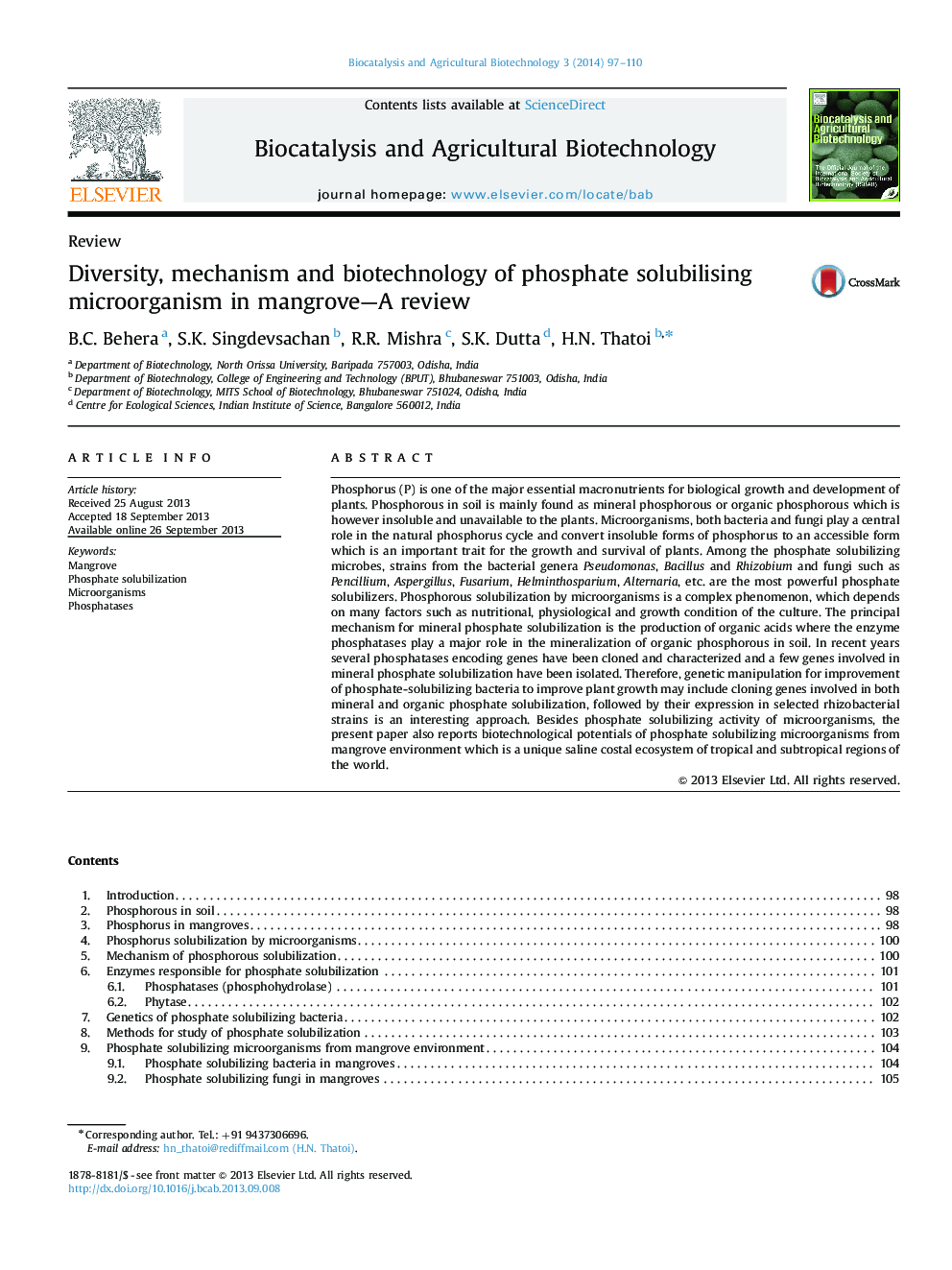| Article ID | Journal | Published Year | Pages | File Type |
|---|---|---|---|---|
| 2075494 | Biocatalysis and Agricultural Biotechnology | 2014 | 14 Pages |
•This review is an updated study of phosphate solubilising microorganism which provides all the information in the field of phosphate solubilization by microorganisms.•Diversity of phosphate solubilising bacteria in different mangroves is well described for the first time.•Mechanism of phosphate solubilization with respect to different enzymes and genes is well discussed.•Biotechnological potential of phosphate solubilising bacteria was described in details for the first time.
Phosphorus (P) is one of the major essential macronutrients for biological growth and development of plants. Phosphorous in soil is mainly found as mineral phosphorous or organic phosphorous which is however insoluble and unavailable to the plants. Microorganisms, both bacteria and fungi play a central role in the natural phosphorus cycle and convert insoluble forms of phosphorus to an accessible form which is an important trait for the growth and survival of plants. Among the phosphate solubilizing microbes, strains from the bacterial genera Pseudomonas, Bacillus and Rhizobium and fungi such as Pencillium, Aspergillus, Fusarium, Helminthosparium, Alternaria, etc. are the most powerful phosphate solubilizers. Phosphorous solubilization by microorganisms is a complex phenomenon, which depends on many factors such as nutritional, physiological and growth condition of the culture. The principal mechanism for mineral phosphate solubilization is the production of organic acids where the enzyme phosphatases play a major role in the mineralization of organic phosphorous in soil. In recent years several phosphatases encoding genes have been cloned and characterized and a few genes involved in mineral phosphate solubilization have been isolated. Therefore, genetic manipulation for improvement of phosphate-solubilizing bacteria to improve plant growth may include cloning genes involved in both mineral and organic phosphate solubilization, followed by their expression in selected rhizobacterial strains is an interesting approach. Besides phosphate solubilizing activity of microorganisms, the present paper also reports biotechnological potentials of phosphate solubilizing microorganisms from mangrove environment which is a unique saline costal ecosystem of tropical and subtropical regions of the world.
